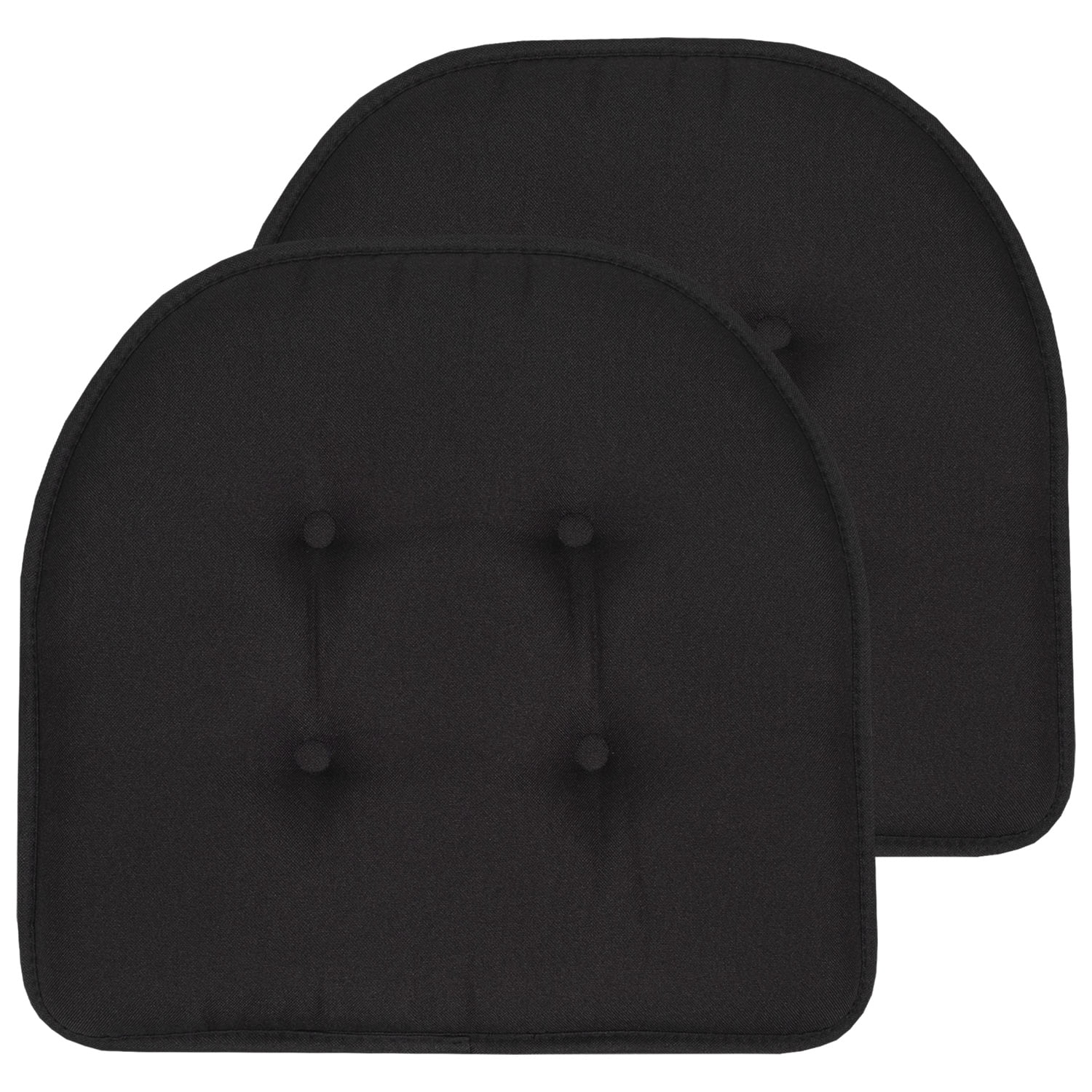Materials and Manufacturing of Black and White Chair Pads

Choosing the right materials for your black and white chair pads is crucial for both aesthetics and longevity. The combination of fabric and construction will determine comfort, durability, and even the environmental impact of your purchase. Let’s delve into the specifics of what makes these delightful additions to your home so wonderfully functional and stylish.
Black and white chair pads – The world of chair pad materials is surprisingly diverse, offering a range of textures, durability levels, and price points. Understanding the properties of each material is key to selecting the perfect pad for your needs. From the crisp elegance of linen to the cozy warmth of faux fur, each option brings its own unique charm to the table (or chair!).
Material Properties and Comparisons, Black and white chair pads
Several materials commonly feature in the creation of black and white chair pads, each boasting a unique set of advantages and disadvantages. Careful consideration of these factors will help you make an informed decision that aligns with your lifestyle and preferences.
- Cotton: A classic choice, cotton is breathable, soft, and relatively inexpensive. It’s easy to care for and readily available in a variety of weights. However, cotton can wrinkle easily and may not be as durable as other options. It also absorbs moisture, making it prone to staining and potentially requiring more frequent cleaning.
- Linen: Linen offers a luxurious feel and a naturally elegant drape. Its strength and durability make it a worthwhile investment. However, linen is more expensive than cotton and can be prone to wrinkling. It’s also less readily available in solid black and white options compared to cotton or polyester.
- Polyester: Polyester is a synthetic fiber known for its durability, wrinkle resistance, and water resistance. It’s often more affordable than natural fibers and requires less maintenance. However, it lacks the breathability and softness of natural fibers and may not feel as luxurious against the skin. It can also contribute more to environmental concerns due to its synthetic nature.
- Faux Fur: Faux fur adds a touch of cozy opulence to chair pads. It’s soft, warm, and visually appealing. However, it can be more difficult to clean than other materials and may shed over time. The environmental impact is also a factor to consider, as the manufacturing process can be energy-intensive and generate waste.
Manufacturing Process
The creation of a black and white chair pad is a multi-step process, from initial design to final packaging. Understanding this process helps appreciate the craftsmanship and care involved in producing these functional and decorative items.
The process typically begins with design and pattern creation. Once the design is finalized, fabric is cut according to the pattern. Next, the fabric pieces are sewn together, often using industrial sewing machines for efficiency and precision. Filling material, such as polyester fiberfill or foam, may be added for extra cushioning and comfort. Finally, the completed chair pad is inspected for quality and packaged for sale. Many manufacturers use automated processes to improve efficiency and reduce costs, but some still rely on skilled artisans for certain aspects of the process.
Environmental Impact
The environmental impact of chair pads varies greatly depending on the materials used and the manufacturing processes employed. Sustainable practices are becoming increasingly important in the textile industry, and consumers are more aware of the environmental consequences of their purchasing decisions.
Natural fibers like cotton and linen are generally considered more environmentally friendly than synthetic fibers like polyester, as they are biodegradable and require less energy to produce. However, the cultivation of cotton can be water-intensive and may involve the use of pesticides. Polyester production, on the other hand, relies on petroleum-based resources and contributes to microplastic pollution. Faux fur, while offering a cruelty-free alternative to real fur, often involves the use of synthetic materials with similar environmental concerns to polyester. Choosing recycled materials and supporting brands committed to sustainable practices can help minimize the environmental footprint of your chair pad purchase.
